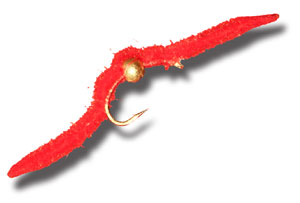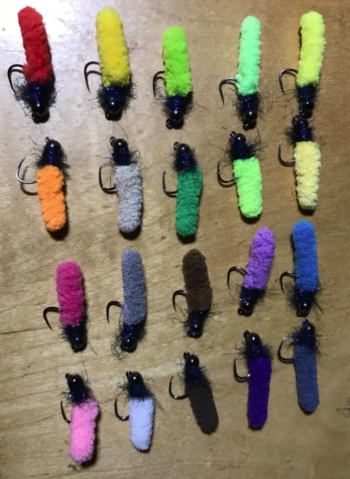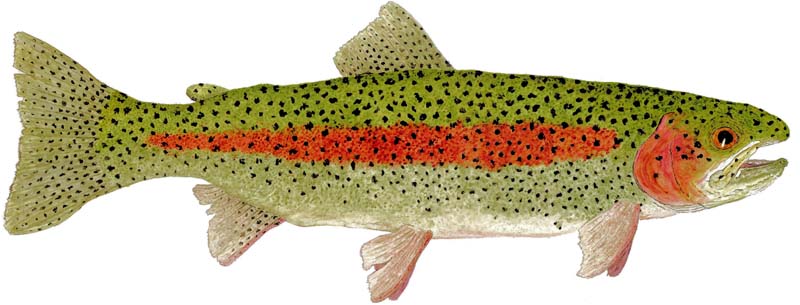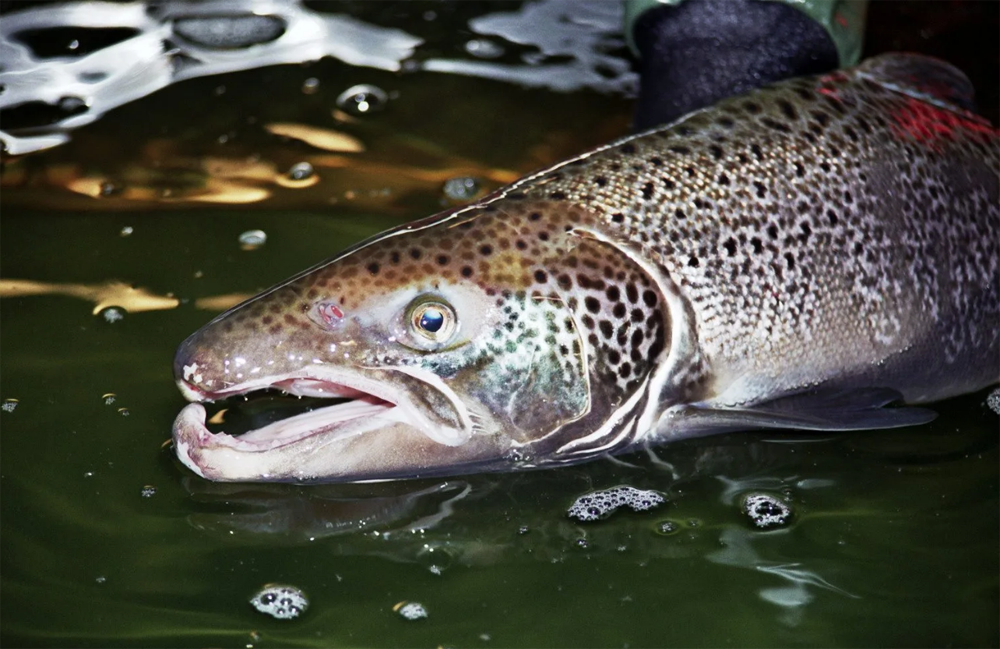![When mud-bottomed backwaters reach 60 degrees, spawning worms emerge [Cinder Worm] and stripers show up to feast Fish caught by the mop fly](https://flylifemagazine.com/wp-content/uploads/2023/07/cinder-worm-fly-striper-1024x768-1.jpg)
The Mop Fly: Stocked trout devoured them; they thought it was a food pellet.’
The mop fly, according to an article in the WSJ written in 2016 by Justin Scheck, originated with a visit in 2006 to a North Carolina Dollar Store that sold a chartreuse mop with thick microfiber nubs.

The San Juan worm is a naturally occurring terrestrial ‘red’ worm. Available at a fly shop near you.
‘I just saw that thing and thought it would work,’ says Jim Estes, a retiree. He cut off some pieces and tied them to hooks weighed down with metal beads. Trout devoured them.
For over a century, fly-fishers aimed to catch trout with imitations of the Caddisflies, Mayflies, Stoneflies, and Terrestrials floating downstream after mating or emerging, but never part of a mop.
The Czech fishing union banned the squirmy wormy from competitions after a U.S. team used it to win a European contest. “I never will fish with this, and I hope every clever and real fly fisherman is in the same boat,” says Martin Musil, a nuclear-power-plant worker who heads the union.
The mop flies have been banned from several competitions in the U.S., but some anglers claim that they helped Lance Egan win the U.S. National Fishing Championships. One American blogger said, ‘The mop fly is the most sinful fly of all time.’ A slight overreaction! However, some angling clubs in the U.K. are now discussing whether or not the mop flies should be banned.

At your local fly shop. Mop Flies to go . . .
Testing the mop flies – make mine worms
Angler and writer Sam Plyler decided to try out the mop flies. He found that no matter what he did, the fish would move large distances to eat this material. Their enthusiasm was a surprise as trout usually waited for their food to float by. Plyler felt it was an incredibly effective fishing bait, but no skill was required to catch the fish. In other words, the bait took the challenge out of fly fishing.
The Squirmy Worm, The mop fly, is a recent innovation, but similar bait was made in Victorian times, which also divided opinion. Anglers already knew that trout would eat more submerged bugs than floating ones, but purists believed this wasn’t the point. The argument went away until American David Hise invented the squirmy worm – made out of the rubber from a ball but was soon ridiculed by traditionalists.

The mop, a year’s supply of chenille ‘Mop Fly material,’ and a mop for pennies. Could this be made into a tube fly and be more dangerous to the well-being of trouts, salmons, and basses? Colors galore, choose—an Envato image.
The mop fliey: San Juan worm
Another disparagement of using a fly to seduce trouts is a naturally occurring terrestrial Polychaeta [bristle worms] or polychaetes. In particular, the San Juan worm. A red worm.
When to use a mop fly?
Chris Hunt, writing for the best fly fishing magazine we have, HATCH, in May of 2016, wrote, ‘… aquatic worms dwell in the moist and muddy banks along bottomland springs and streams, and when the water rises, these worms—not unlike the ones you used to dig up in grandma’s garden before heading off to fish as a kid—end up in the water. And the trout love them.
The mop flies are easy to fish with?
Its reputation as one step above Bait is undeserved, and, tied correctly, the fly will produce when most others won’t under high-water conditions. Think about it. This critter offers a fat bite of protein for a trout that requires minimal ingestion exertion. These worms, often waterlogged or dead, are immobile in the water and don’t require much pursuit. They drift in the current and, especially after a rain or a high-water event on a tailwater, provide a stable buffet for trout.’
The secret’s out. The worm is legit, and if you’re too damned proud to dive to the depths of the fly box for the right pattern for the conditions, that’s on you. The rest of us … well, we’ll catch a few trout for you.
And when you ask what they’re hitting on, we’ll shrug and say, ‘I’m just matching the hatch.’
— Chris Hunt/ Hatch Magazine.

Thom Glace’s Yellow Breeches Rainbow. Visit award winning water colorist’s website.


